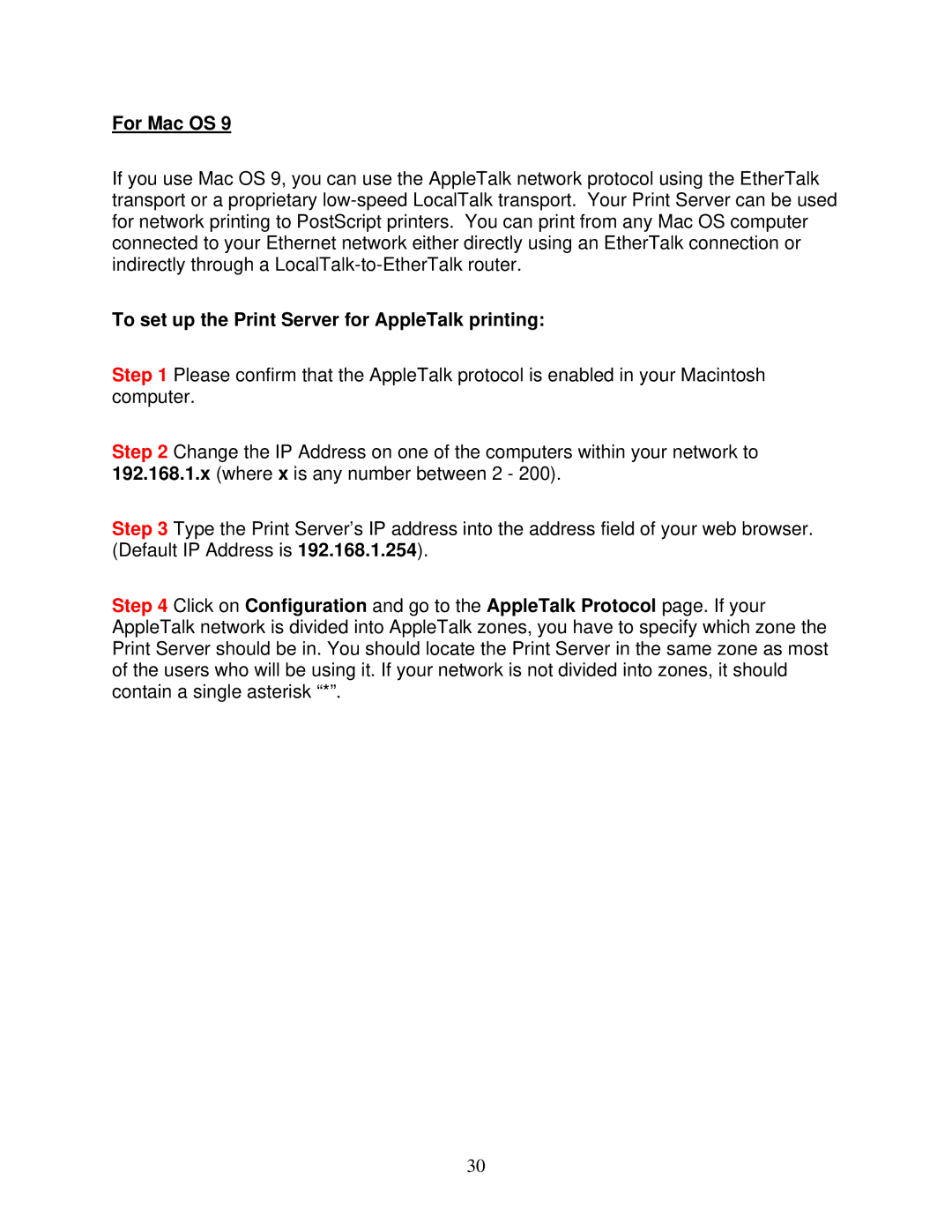APSUSB1 specifications
The Airlink101 APSUSB1 is a versatile and compact wireless print server designed to streamline printing tasks wirelessly within both home and office environments. With its user-friendly features and robust technology, the APSUSB1 facilitates seamless printing without the need for physical connections to computers, making it an ideal choice for users looking to enhance productivity and convenience.One of the main features of the APSUSB1 is its compatibility with a wide range of printers. This print server supports various printer types, including inkjet and laser printers from numerous manufacturers. This flexibility ensures that users can take advantage of their existing hardware without the need for costly upgrades.
The APSUSB1 operates on standard IEEE 802.11b/g wireless protocols, allowing it to connect to Wi-Fi networks easily. Its wireless capability eliminates the chaos of tangled cables and provides users with the freedom to position their printers wherever they are most convenient. The print server also supports both infrastructure and ad-hoc wireless modes, allowing for flexible networking configurations depending on user needs.
Another noteworthy characteristic is the device’s support for multiple operating systems. The APSUSB1 is compatible with Windows, Linux, and Mac OS, ensuring that users across different platforms can integrate it into their workflows without issues. This cross-platform support makes it an excellent choice for mixed-environment settings commonly found in modern offices.
Setup and installation of the Airlink101 APSUSB1 are made simple with its intuitive web-based interface. Users can easily configure the device and manage print jobs without extensive technical knowledge. Moreover, the APSUSB1 features a built-in DHCP server, further simplifying the network setup process by allowing it to automatically obtain network settings.
In addition to these features, the APSUSB1 comes equipped with advanced security protocols, including WEP and WPA/WPA2 encryption, ensuring that all wireless communications remain secure. This is particularly important in business environments where data privacy and security are paramount.
In summary, the Airlink101 APSUSB1 is an efficient and reliable wireless print server that offers broad compatibility, easy installation, and robust security features. Its combination of flexibility and functionality makes it an invaluable tool for users seeking to modernize their printing capabilities and optimize their workflow. With the APSUSB1, users can enjoy the convenience of wireless printing, ultimately enhancing productivity in their daily tasks.
